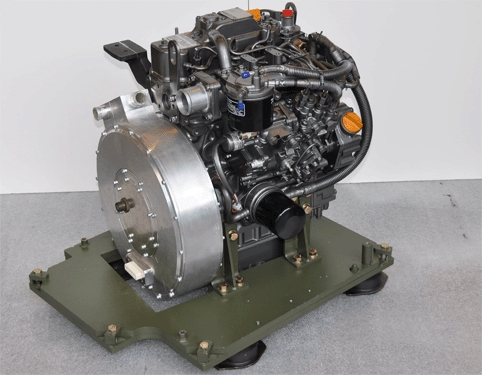The defence company worked with BAE Systems and hybrid-vehicle technology specialist Provector to upgrade a conventional 28V system in a demonstrator Warrior 2000 AFV into one designed for much higher demands.
The new system incorporates an auxillary power unit (APU) generator and power take off (PTO) generator based on the same permanent magnet motors used in hybrid cars produced by such manufacturers as Toyota. The power from these generators, which generate 610V, pass through a AC to DC dual inverter and a DC to DC converter supports the supply of 28V to legacy equipment.
The prototype is the result of a of a 20-month £3.5m Ministry of Defence (MoD) research programme aimed at finding a solution for managing power on future fighting vehicles. Prior coverage from The Engineer can be read here.
According to Fiona Lewinton, managing director of Qinetiq’s Force Protection and Physical Security division, military vehicles are becoming equipped with more and more power hungry equipment such as electronic countermeasures, communications systems and cooling equipment.
‘We see in the not too distant future the capabilities of platforms are going to exceed 28V systems,’ she said.

David Crane, business manager of the research programme, explained higher voltage systems provide the ability to increase power with fewer losses.
These power losses he said, relate to the current. Crane said power flowing at low voltages raises the current.
‘As the current goes up, the losses go up as the square of the current,’ he said. ‘If you double the current you get four times the losses.’
Not only does this mean 610V provides better efficiency, but also higher power density. Following research conducted by Qinetiq, Crane said it was found that 28V systems top out at about 20kW of power, but a 610V system tops out at 800kW of power.
‘You’re giving yourself an enabler for a more electric vehicle and electric drive,’ he said.
While Qinetiq has yet to put these armoured vehicles through extensive drive tests, Crane pointed out there are already many successful 610V applications. He gave examples such as the Toyota Prius and hybrid-electric buses. Within the military, he said, countries such as the US and Germany have already announced plans to upgrade their military vehicles with 610V systems.
Crane could not confirm when or if the MoD has decided to begin deploying 610V systems for future AFVs.











UK Enters ‘Golden Age of Nuclear’
The delay (nearly 8 years) in getting approval for the Rolls-Royce SMR is most worrying. Signifies a torpid and expensive system that is quite onerous...